- Home
- Gary Paulsen
Tracker Page 6
Tracker Read online
Page 6
And so to the Bighorn Mountains.
• • •
It is probably true that all mountains are beautiful; there is something about them, the quality of bigness, of an ethereal joy to their size and scenic quality. And I have seen mountain ranges in Canada, the United States, particularly Alaska, have run sled dogs in them and through them and over them and have been immersed in their beauty as with the old Navajo prayer:
Beauty behind me
Beauty before me
Beauty to my left
Beauty to my right
All around me is beauty.
But there is something special about the Bighorns in Wyoming.
I found a small house at the base of a dirt track called the Penrose Trail, which led directly up out of the town of Story into the lower peaks and a huge hay meadow called Penrose Park.
If memory serves, it is twenty or so miles from Story up to the meadow, then a few more miles to an old cabin on a lake and the beginning of a wilderness trail through staggering beauty; the trail is called the Solitude Trail—among other nicknames—and it wanders through some seventy miles of mountains in a large loop.
Older people who lived in Story, who rode the mountains before there were trails, told me of the beauty in the high country, and it became at first a lure, a pull, and then almost a drive.
I wanted to see the country, the high country, as I had seen it in Alaska with dog teams; the problem here was that it was summer, too hot for dogs, the distances were much too great, and my dislike of hiking much too sincere for me to even consider backpacking through the mountains.
And so, to horse.
Unfortunately, I knew little or nothing as to how one goes about acquiring a horse to ride on potentially dangerous mountain trails.
And then another horse to pack gear on those same possibly dangerous mountain trails.
For those who have read of my trials and tribulations when I tried to learn how to run dogs for the Iditarod, you will note a great many similarities in the learning procedure, or more accurately, how the learning processes for both endeavors strongly resembled a train wreck. It is true that I have for most of my life lived beneath the military concept that “there is absolutely no substitute for personal inspection at zero altitude” when it comes to trying to learn something. While functional, the problem with this theory is that it often places you personally and physically at the very nexus of destruction. Hence both legs broken, both arms broken more than once, wrists broken, teeth knocked out, ribs cracked and broken, both thumbs broken more than once (strangely more painful than the other breaks) and—seemingly impossible—an arrow self-driven through my left thumb.
Among other bits of lesser mayhem . . .
I had read many Westerns, of course, doing research, and had even written several, had indeed won the Spur Award from the Western Writers of America three times for Western novels. This is perhaps indicative of excess glibness, considering how little I apparently knew. But I had read all those books and seen God knows how many Western films and knew that people had used packhorses. I had run two Iditarod sled-dog races across Alaska, and I thought—really, it seemed to be that simple—that if a person could do one, he could do the other.
The problem was that I did not know anyone involved with horses and so—as God is my witness—I went to the yellow pages for Sheridan, Wyoming (the nearest town of any size), looked under “horse,” and near the end of the section, found a listing of horse brokers. (This was before there was a viable Internet to use.)
Perfect, I thought. There were people who bought and sold horses—exactly what I needed. The first two names I called were not available, but on the third call, a gruff voice answered with a word that sounded like “haaawdy” and then asked, “Whut due ya’ll need . . . ?”
“It’s simple, really,” I answered. “I need two horses. One to ride, one to carry a pack. I want to go up into the Bighorn Mountains. . . .”
“Why, sure you do.” There was a pause, a long pause. I would surmise later, when I knew more of horse brokers, that he either thought I was joking, or, if he were very lucky, that I was uncompromisingly green, bordering on being perhaps medically stupid, and he had a chance to make his profit for the year on a one- or two-horse deal.
It was, of course, closer to the latter.
“Where do you live?” he asked.
“Story.” I named the small town at the base of the Bighorns, near where the Penrose Trail comes out, or down and out. I had purchased a small house there with a few acres of thick grass, and I was surprised to find it vacant. I was to find later—and there were so many “laters” when dealing with Wyoming—near the end of October, why this was to be, when the first late-October snow, a crushing thirty-two inches, came in one day, followed two days later by another thirty inches.
But back then I was wonderfully innocent; it was a grand summer day and the mountains beckoned, pulled, demanded that I come to them as I had in winter in Alaska with dogs during the Iditarod. “Where should I come?” I asked.
“No,” he said quickly. “I’ll come to you with the horses. I have two that are perfect for you.”
“Well, let me . . .” I was going to say, “Let me get ready for them,” as I had no idea what one did, really, to have and keep horses. The property had a small pasture with two feet of grass and a three-sided shed, was surrounded by tall ponderosa pines for shade and little else.
But he hung up before I could get another word out, and it seemed that I had just turned around when a large, gaudy pickup hooked to a flashy two-horse trailer pulled into the driveway. It’s difficult to describe it without lapsing into poor taste; indeed, the truck and trailer alone were a monument to the word “god-awful.” The color was an eye-ripping red with black rubber mudguards, and on each mudguard was a chrome silhouette of a nude woman, and across the front of the hood was—I swear—an actual six-foot-wide longhorn mounted in a silver boss with an engraving (again, I couldn’t make this up) of another nude woman with impossibly large features, which was, in turn, matched by the mudguards on the trailer and a large painted silhouette of a nude on the front of the trailer cleverly positioned so that a small ventilation opening for the horses to put their heads out . . . Well, you get the picture.
And if the truck and trailer were in bad taste, they were nothing compared to the man. Tall but with a large beer belly covered by an enormous silver and gold belt buckle with RODEO engraved over yet another silhouette of a nude woman, on top of tailor-cut jeans tucked inside knee-high white cowboys boots with (a major change in art forms) a bright blue bald eagle stitched on the front.
On his head was an impossibly large cowboy hat with a silver hatband, which I at first thought was made of little conchos but turned out to be little silhouettes of, right . . . more women.
He shook my hand without speaking, turned and opened the back of the trailer, and let two horses step out at the same time, which meant they weren’t tied in, nor did they have butt chains on—two major mistakes that prove he knew little about trailering horses and hence little about horses themselves.
Not that it mattered. I had already made up my mind that looking in the yellow pages cold for a horse broker was Very Wrong and that I wouldn’t buy a horse from this guy if he gave them away.
And yet . . .
And yet . . .
A thing happened, something I had never seen before.
The horses were simply standing there, at relative peace—no nervousness at all—and there was something about them that seemed, well, inviting. And I thought, felt, that I should go to them and touch them, pet them. I know how that sounds, and I have never been all “woo-woo” about animals, especially horses, of which I knew little except that they were big, huge, nine hundred to a thousand pounds, and potentially dangerous. Very dangerous. Decidedly so if they were startled or panicked or surprised. At that time I had had two friends killed while riding them and knew of several others permanently in wheelchairs. (Th
is was years before actor Christopher Reeve, who as an excellent, Olympic-level rider, was permanently completely disabled—which led directly to his later death—when falling on a simple training jump.)
I actually took a step toward them—worse, toward their rear ends, which is never the way you walk up on a strange horse—before stopping.
Josh, my border collie, my friend, had been at my side watching, and before I could move farther, he rose from a sitting position, trotted forward, and without hesitating at all, trotted between the back legs of the mare, paused beneath her belly, then continued up through the front legs. At that moment she lowered her head and they touched noses, whereupon Josh turned to the right, touched noses with the black horse, who had lowered his head, trotted between his front legs, paused under the belly, through his back legs, then back in front of me, where he sat, looked up and—I swear—nodded.
Or it seemed that he nodded.
Or he wanted to nod.
Or he wanted me to think that he nodded.
Or he wanted me to know something. Something good about the horses.
What we had witnessed—the broker and I—had been nothing less than a kind of miracle. Dogs, perhaps many dogs, had been killed simply by getting too close to the back feet of a horse. Years later I would acquire a horse who had mistakenly killed his owner, a young woman who was checking his back feet, when a dog came too close. As it kicked at the dog, the horse caught the woman in the chest with a glancing blow. The force was so powerful it severed her aorta and she bled to death before help could arrive.
For Josh to so nonchalantly trot through the mare’s legs, as well as the legs of the black cow pony, then back to me, came in the form of a message. . . .
And I listened.
Also by Gary Paulsen
Dancing Carl
Dogsong
Hatchet
Sentries
Woodsong
WE HOPE YOU LOVED READING THIS EBOOK!
We have SO many more books for kids in the in-beTWEEN age that we’d love to share with you! Sign up for our IN THE MIDDLE books newsletter and you’ll receive news about other great books, exclusive excerpts, games, author interviews, and more!
CLICK HERE TO SIGN UP
or visit us online to sign up at
eBookNews.SimonandSchuster.com/middle
SIMON & SCHUSTER BOOKS FOR YOUNG READERS
An imprint of Simon & Schuster Children’s Publishing Division
1230 Avenue of the Americas, New York, NY 10020
www.SimonandSchuster.com
This book is a work of fiction. Any references to historical events, real people, or real locales are used fictitiously. Other names, characters, places, and incidents are products of the author’s imagination, and any resemblance to actual events or locales or persons, living or dead, is entirely coincidental.
Copyright © 1984 by Gary Paulsen
All rights reserved, including the right of reproduction in whole or in part in any form.
Simon & Schuster Books for Young Readers is a trademark of Simon & Schuster, Inc.
For information about special discounts for bulk purchases, please contact Simon & Schuster Special Sales at 1-866-506-1949 or [email protected].
The Simon & Schuster Speakers Bureau can bring authors to your live event. For more information or to book an event, contact the Simon & Schuster Speakers Bureau at 1-866-248-3049 or visit our website at www.simonspeakers.com.
Also available in a Simon & Schuster Books for Young Readers paperback edition
First Simon & Schuster Books for Young Readers ebook edition May 2012
The Library of Congress has cataloged the hardcover edition as follows: Paulsen, Gary. Tracker.
Summary: Only thirteen, John must track a deer in the Minnesota woods for his family’s winter meat, and in doing so finds himself drawn to the doe who leads him and hating his role as hunter.
[1. Hunting—Fiction. 2. Deer—Fiction]
I. Title.
PZ7.P2843Tr 1984 [Fic] 83-22447
ISBN-13: 978-0-02-770220-0 (hc.)
ISBN-10: 0-02-770220-0 (hc.)
ISBN-13: 978-1-4169-3940-5 (pbk.)
ISBN-10: 1-4169-3940-7 (pbk.)
ISBN-13: 978-1-4424-6712-5 (eBook)

 Hatchet br-1
Hatchet br-1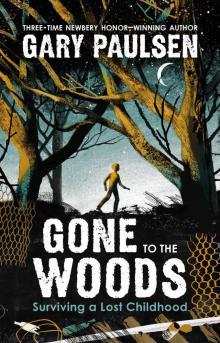 Gone to the Woods
Gone to the Woods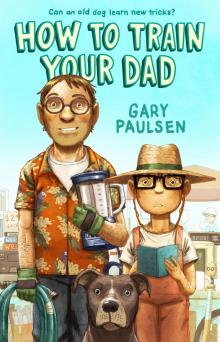 How to Train Your Dad
How to Train Your Dad The Haymeadow
The Haymeadow Amos Binder, Secret Agent
Amos Binder, Secret Agent The River br-2
The River br-2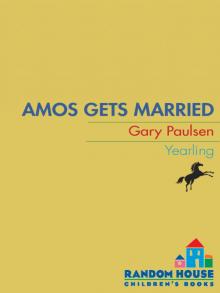 Amos Gets Married
Amos Gets Married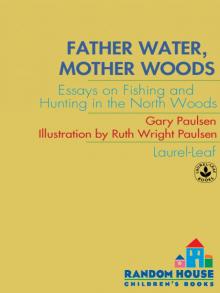 Father Water, Mother Woods
Father Water, Mother Woods Dunc and the Scam Artists
Dunc and the Scam Artists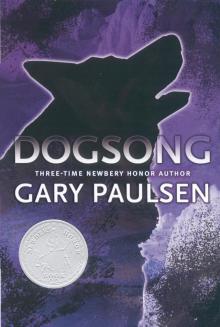 Dogsong
Dogsong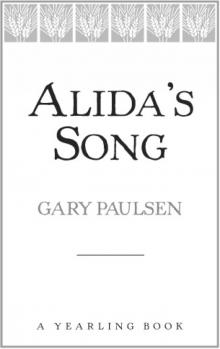 Alida's Song
Alida's Song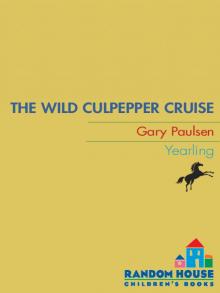 The Wild Culpepper Cruise
The Wild Culpepper Cruise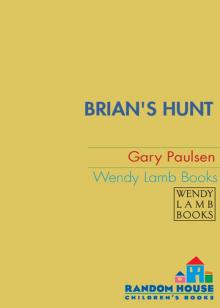 Brian's Hunt
Brian's Hunt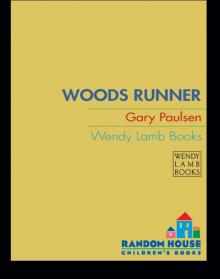 Woods Runner
Woods Runner Dunc and Amos on Thin Ice
Dunc and Amos on Thin Ice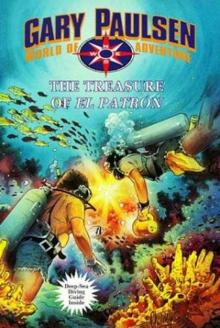 The Treasure of El Patron
The Treasure of El Patron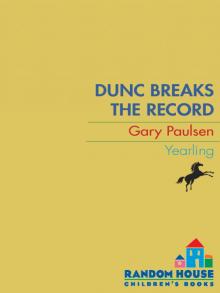 Dunc Breaks the Record
Dunc Breaks the Record Harris and Me
Harris and Me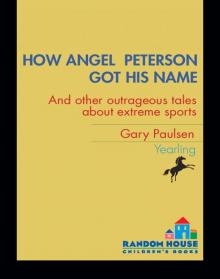 How Angel Peterson Got His Name
How Angel Peterson Got His Name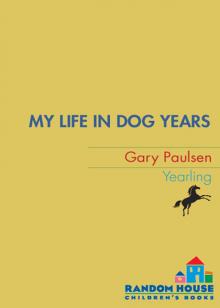 My Life in Dog Years
My Life in Dog Years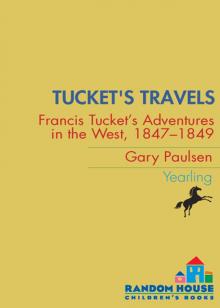 Tucket's Travels
Tucket's Travels Canyons
Canyons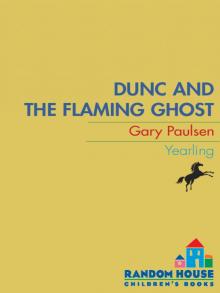 Dunc and the Flaming Ghost
Dunc and the Flaming Ghost The Schernoff Discoveries
The Schernoff Discoveries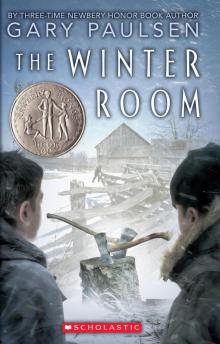 The Winter Room
The Winter Room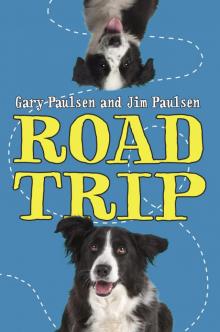 Road Trip
Road Trip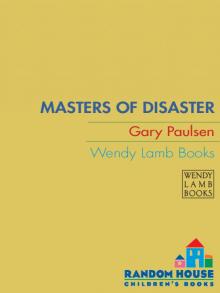 Masters of Disaster
Masters of Disaster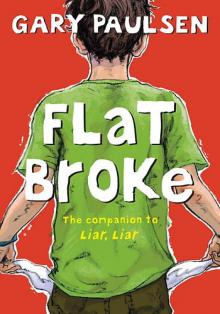 Flat Broke
Flat Broke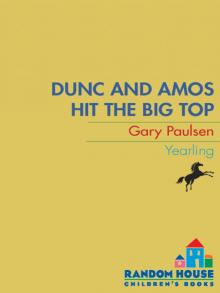 Dunc and Amos Hit the Big Top
Dunc and Amos Hit the Big Top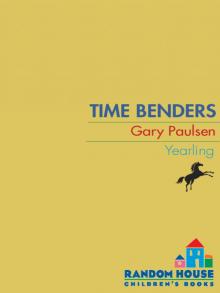 Time Benders
Time Benders Caught by the Sea
Caught by the Sea Dancing Carl
Dancing Carl The Seventh Crystal
The Seventh Crystal The Boy Who Owned the School
The Boy Who Owned the School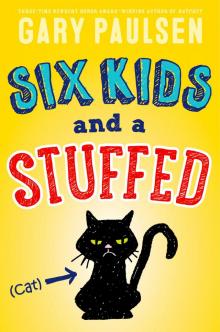 Six Kids and a Stuffed Cat
Six Kids and a Stuffed Cat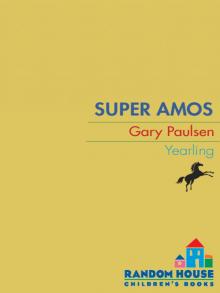 Super Amos
Super Amos Dunc and the Greased Sticks of Doom
Dunc and the Greased Sticks of Doom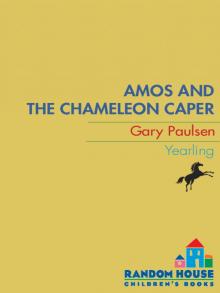 Amos and the Chameleon Caper
Amos and the Chameleon Caper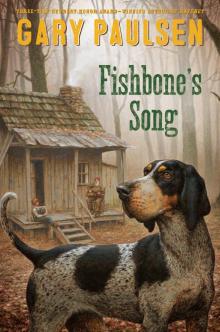 Fishbone's Song
Fishbone's Song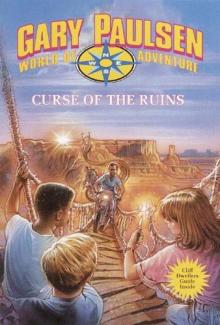 Curse of the Ruins
Curse of the Ruins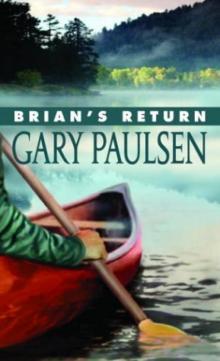 Brian's Return br-4
Brian's Return br-4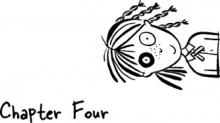 Molly McGinty Has a Really Good Day
Molly McGinty Has a Really Good Day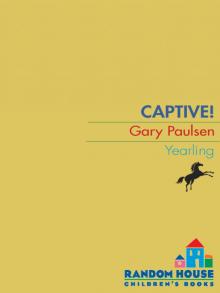 Captive!
Captive! Culpepper's Cannon
Culpepper's Cannon The Car
The Car Puppies, Dogs, and Blue Northers
Puppies, Dogs, and Blue Northers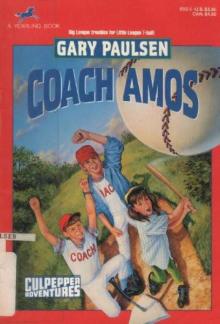 Coach Amos
Coach Amos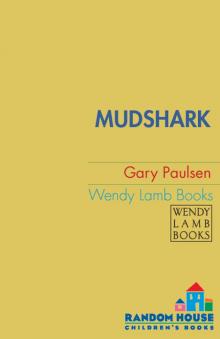 Mudshark
Mudshark The White Fox Chronicles
The White Fox Chronicles Dunc and Amos Meet the Slasher
Dunc and Amos Meet the Slasher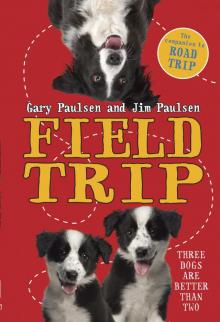 Field Trip
Field Trip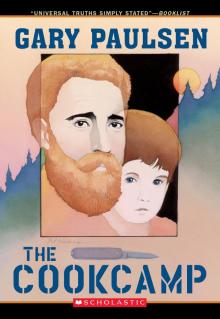 The Cookcamp
The Cookcamp Crush
Crush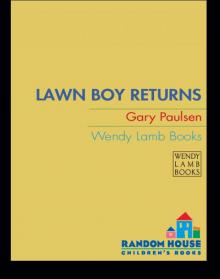 Lawn Boy Returns
Lawn Boy Returns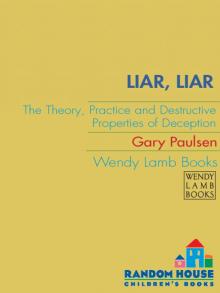 Liar, Liar k-1
Liar, Liar k-1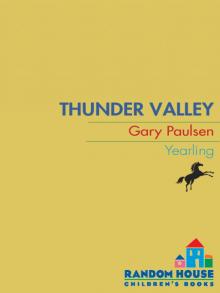 Thunder Valley
Thunder Valley The Tent
The Tent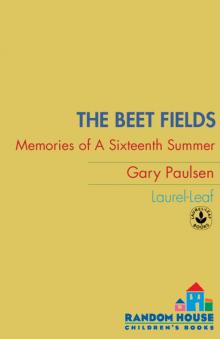 The Beet Fields
The Beet Fields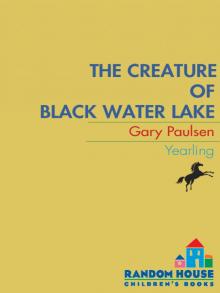 The Creature of Black Water Lake
The Creature of Black Water Lake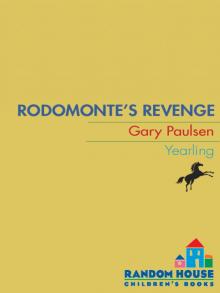 Rodomonte's Revenge
Rodomonte's Revenge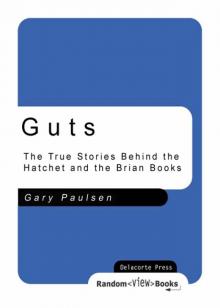 Guts
Guts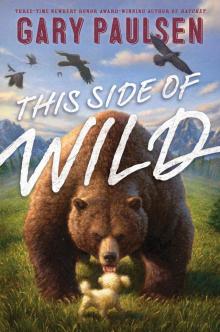 This Side of Wild
This Side of Wild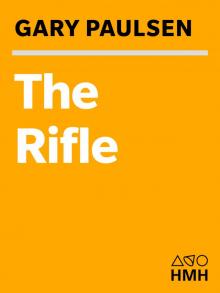 The Rifle
The Rifle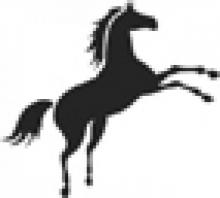 The Time Hackers
The Time Hackers Amos Goes Bananas
Amos Goes Bananas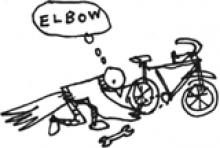 The Amazing Life of Birds
The Amazing Life of Birds Dunc's Undercover Christmas
Dunc's Undercover Christmas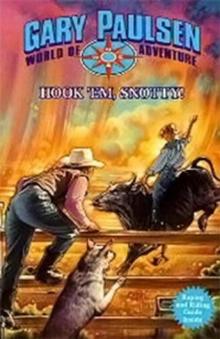 Hook 'Em Snotty
Hook 'Em Snotty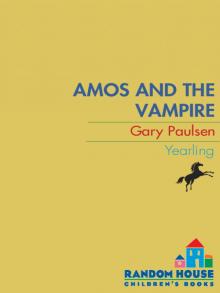 Amos and the Vampire
Amos and the Vampire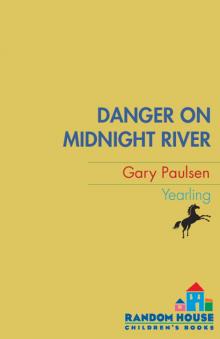 Danger on Midnight River
Danger on Midnight River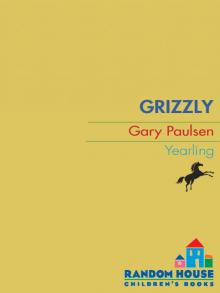 Grizzly
Grizzly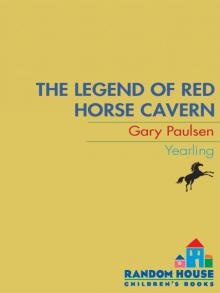 The Legend of Red Horse Cavern
The Legend of Red Horse Cavern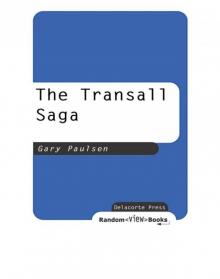 The Transall Saga
The Transall Saga Lawn Boy
Lawn Boy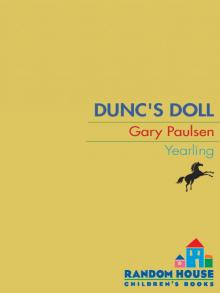 The Case of Dunc's Doll
The Case of Dunc's Doll A Christmas Sonata
A Christmas Sonata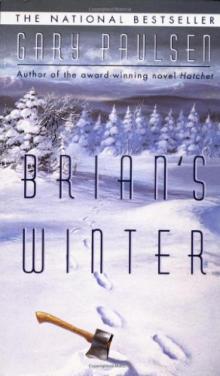 Brian's Winter br-3
Brian's Winter br-3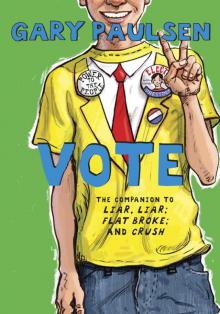 Vote
Vote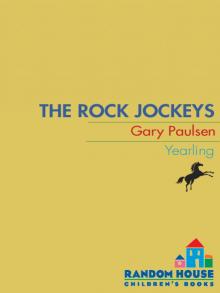 The Rock Jockeys
The Rock Jockeys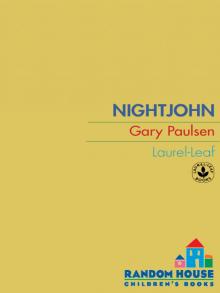 Nightjohn
Nightjohn Escape from Fire Mountain
Escape from Fire Mountain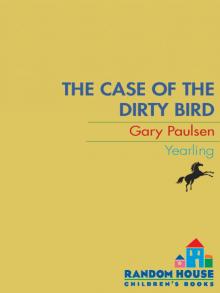 The Case of the Dirty Bird
The Case of the Dirty Bird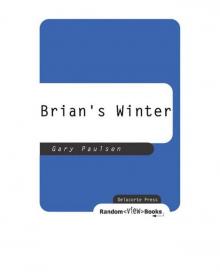 Brian's Winter
Brian's Winter Amos's Killer Concert Caper
Amos's Killer Concert Caper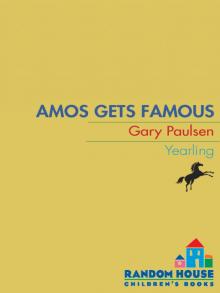 Amos Gets Famous
Amos Gets Famous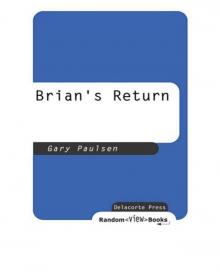 Brian's Return
Brian's Return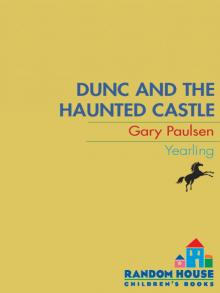 Dunc and the Haunted Castle
Dunc and the Haunted Castle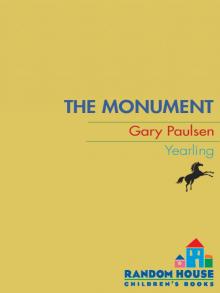 The Monument
The Monument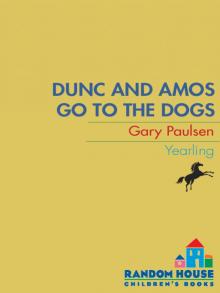 Dunc and Amos Go to the Dogs
Dunc and Amos Go to the Dogs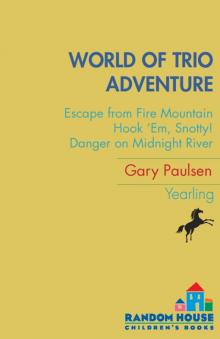 World of Adventure Trio
World of Adventure Trio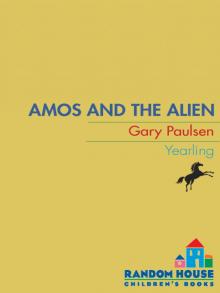 Amos and the Alien
Amos and the Alien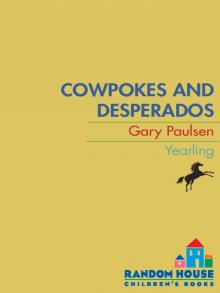 Cowpokes and Desperadoes
Cowpokes and Desperadoes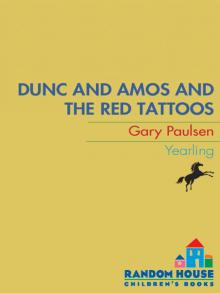 Dunc and Amos and the Red Tattoos
Dunc and Amos and the Red Tattoos Dunc's Dump
Dunc's Dump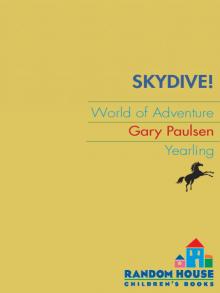 Skydive
Skydive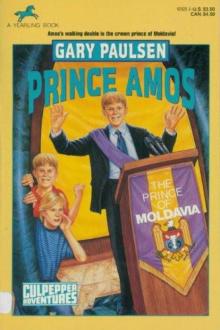 Prince Amos
Prince Amos The Gorgon Slayer
The Gorgon Slayer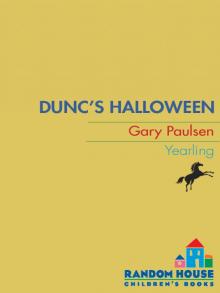 Dunc's Halloween
Dunc's Halloween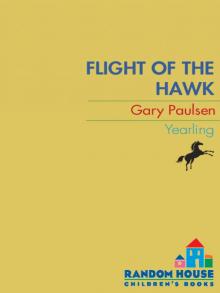 Flight of the Hawk
Flight of the Hawk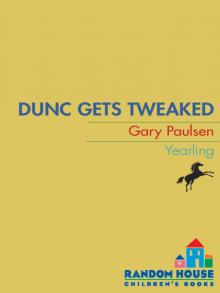 Dunc Gets Tweaked
Dunc Gets Tweaked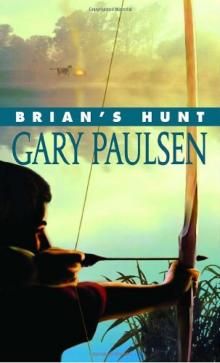 Brian's Hunt br-5
Brian's Hunt br-5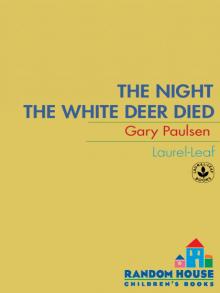 The Night the White Deer Died
The Night the White Deer Died